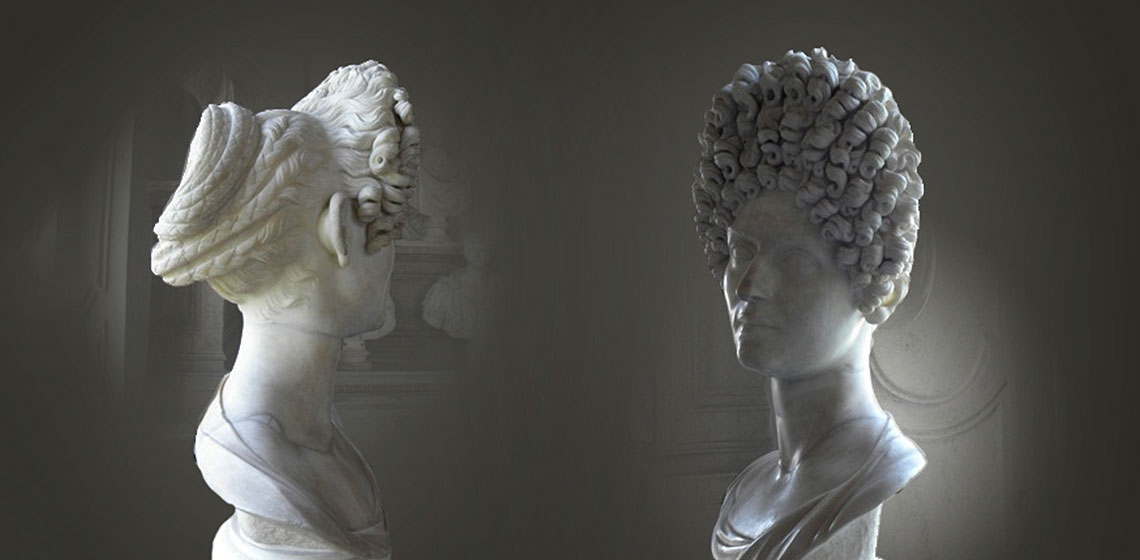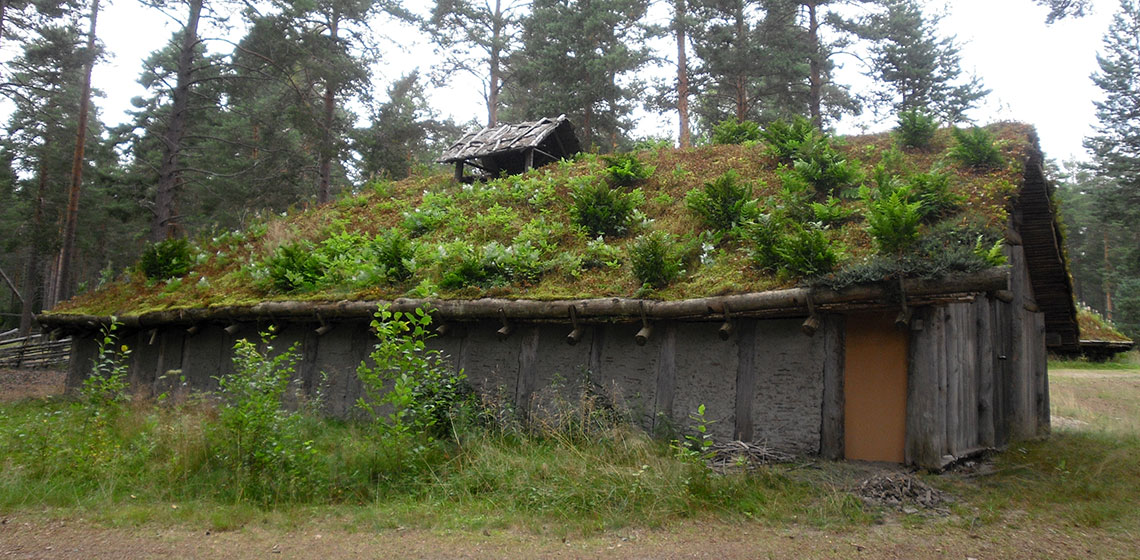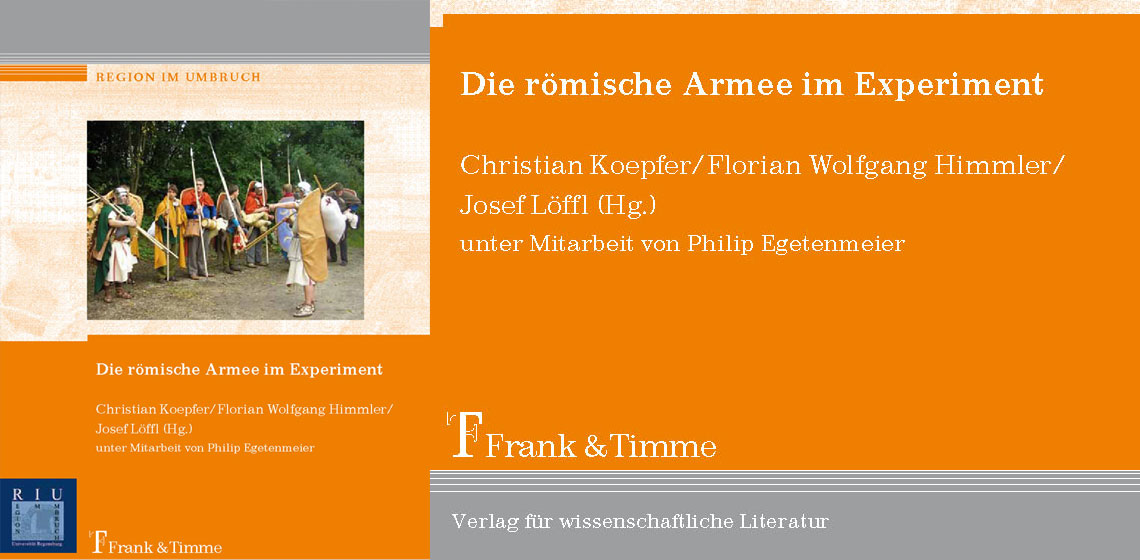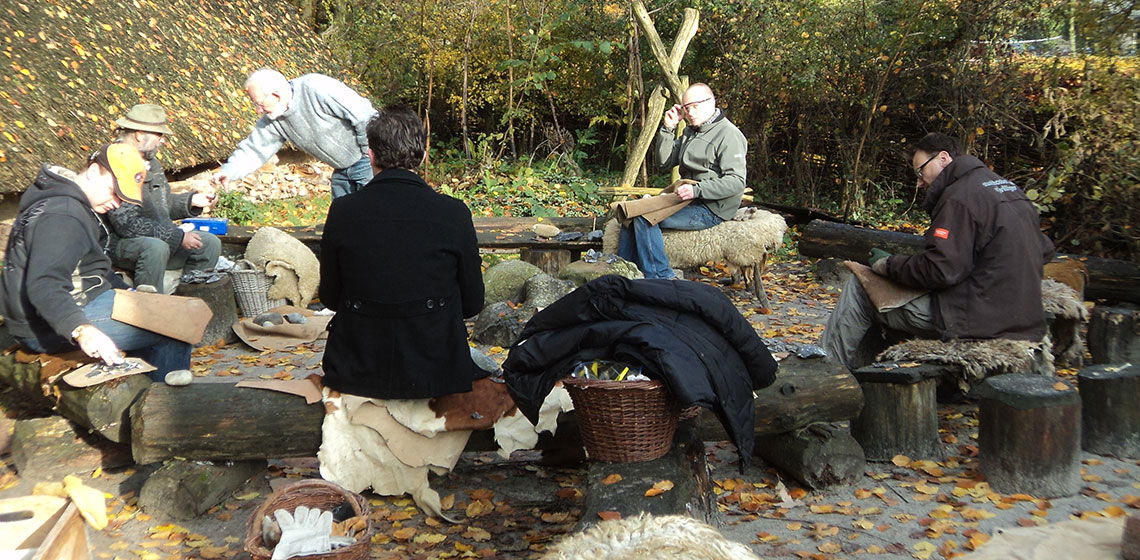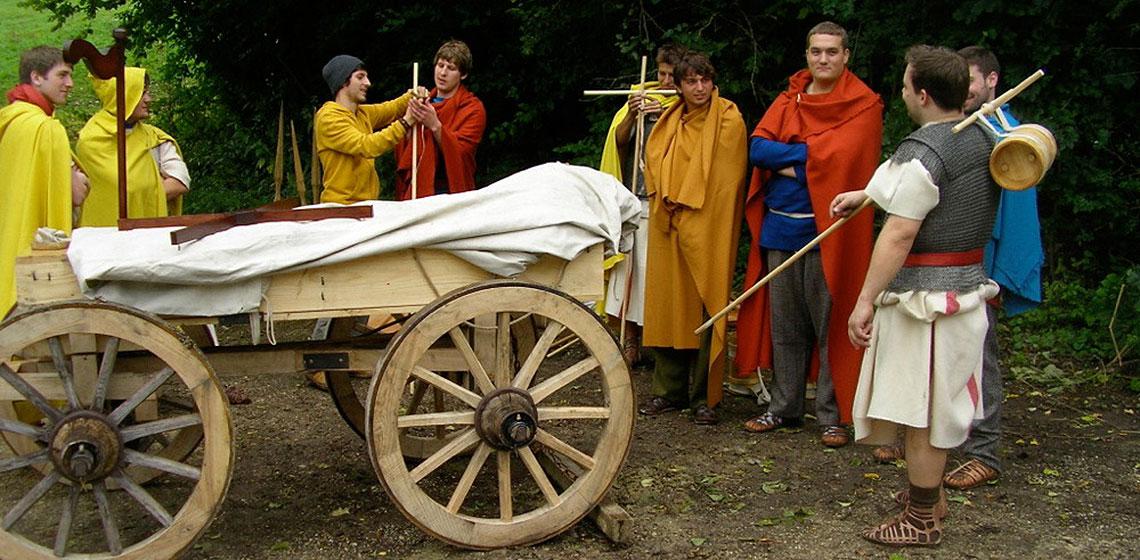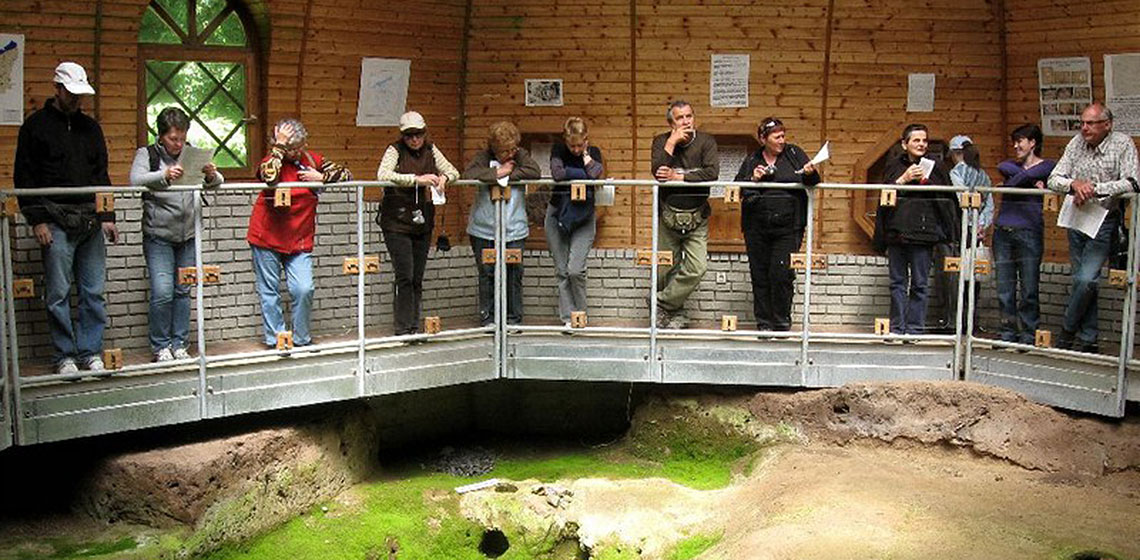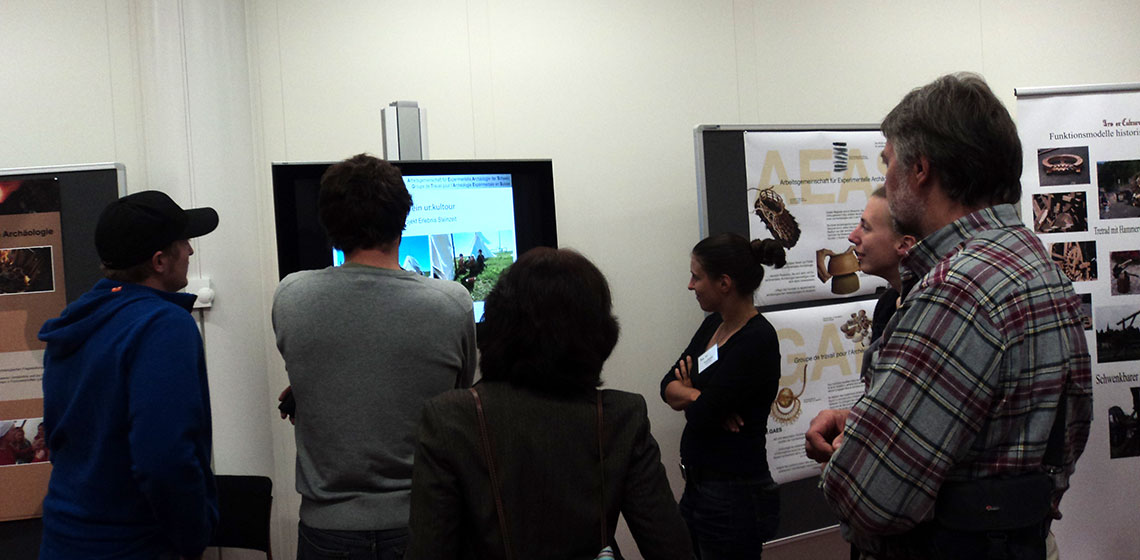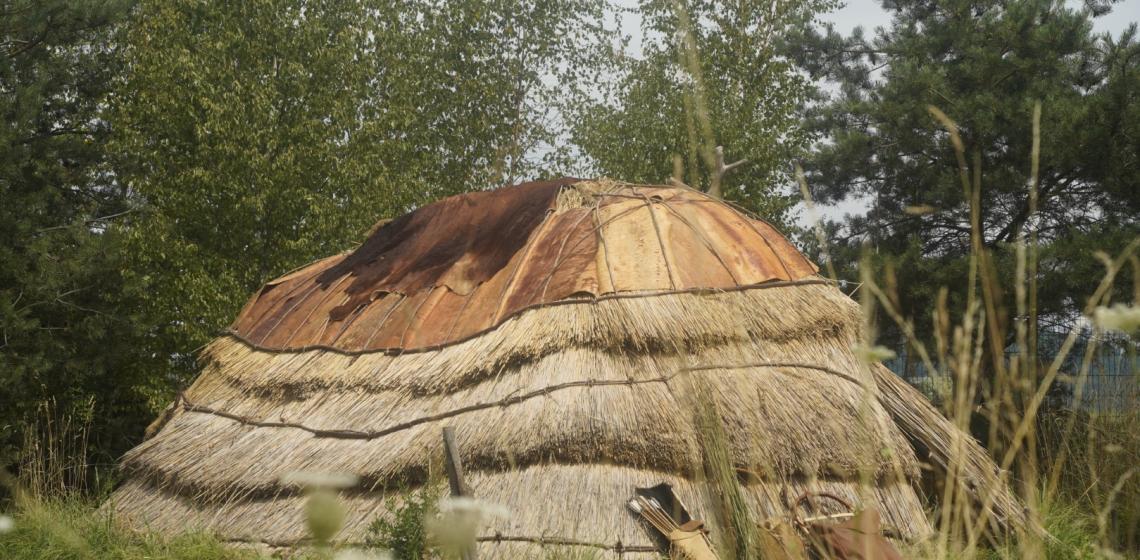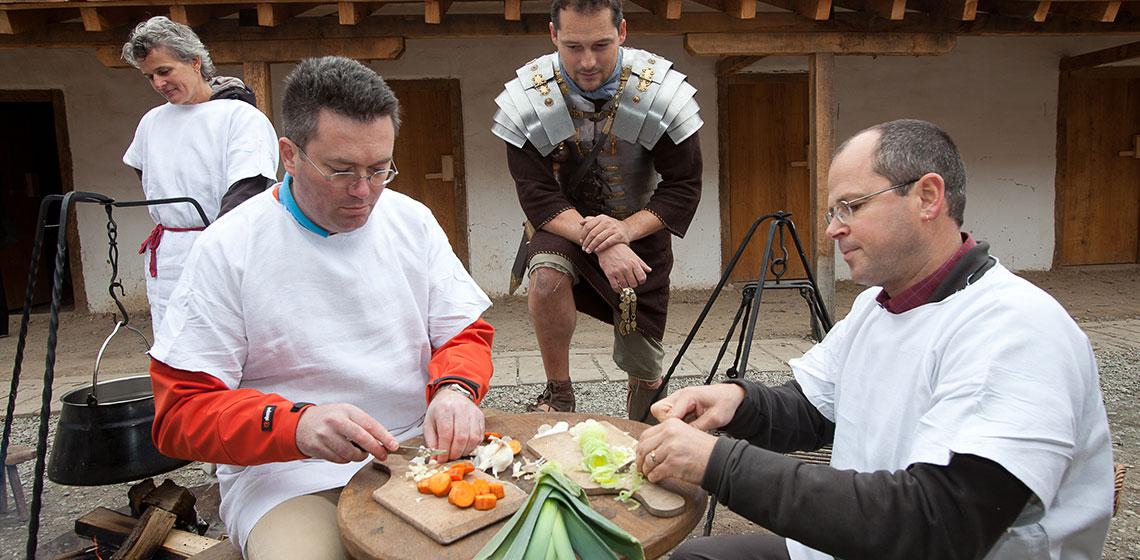Roman Era
Gene Fornby - the Ancient Village of Gene
I have for years, through articles, debate and political activities, been a very active part in the efforts to preserve Gene Fornby from demolition. The cause seemed long doomed to be lost, but in the end the saving-line won. Therefore the longhouse and the smithy, in my opinion the important reconstructions, will be preserved and restored.
Merryn Dineley M.Phil
My interest is the craft and technology of making malt and beer brewing over the ages. Wine is fermented from grapes. Mead is fermented from honey. Both grapes and honey contain natural sugars.
Book Review: Die römische Armee im Experiment by Chr. Koepfer, F. W. Himmler & J. Löffl
Conference Review: VAEE Celebrates 20 Years
If you live in the Netherlands and work with archaeological open-air museums, archaeological experimentation or education, there is a good chance you are a member of VAEE, the Dutch Association for Experimental Archaeology & Education...
FAGUA e.V. (DE)
At Augsburg University the Chair of Ancient History has a society of friends called "Verein der Freunde der Alten Geschichte der Universität Augsburg e.V.". The society exists to establish experimental archaeology in an academic environment.
At Augsburg University the Chair of Ancient History has a society of friends called "Verein der Freunde der Alten Geschichte der Universität Augsburg e.V." (Friends of Ancient History at Augsburg University).
...
Event Review: Fourth Iron Smelting Camp in Hungary
Conference Review: EXAR Tagung 2012, Brugg (CH)
In early October 2012, EXAR held its yearly conference in Brugg, Switzerland. EXAR is the European Association for experimental archaeology and has over 150 members. Their highlight is their annual conference and the proceedings, which usually appear 12 months later, which is very fast...
Archäologisches Freilichtmuseum Zeiteninsel (DE)
The "Zeiteninsel" is an Archaeological Open-Air Museum situated in Weimar-Argenstein near Marburg. The museum is under construction since 2010, although erecting of buildings started in 2017.
Legionärspfad (CH)
The Legionary Trail is a Roman archaeological park in Windisch/Brugg, (nearby Zurich), in the canton of Argovia. It stands on the historical site of the only Roman army camp ever established in Switzerland. Visitors discover ten archaeological sites and accurately reconstructed Roman military barracks from the 1st century AD. Originally, the camp spread out over some 20 hectares. The barracks were first built out of timber and clay by the soldiers of the 13th legion. Over the years, a civilian settlement developed outside the legionary camp, which grew to around 45 hectares and probably accommodated some 10,000 inhabitants.
The Legionary Trail is a Roman archaeological park in Windisch/Brugg, (nearby Zurich), in the canton of Argovia. It stands on the historical site of the only Roman army camp ever established in Switzerland. Visitors discover eight archaeological sites and ...

